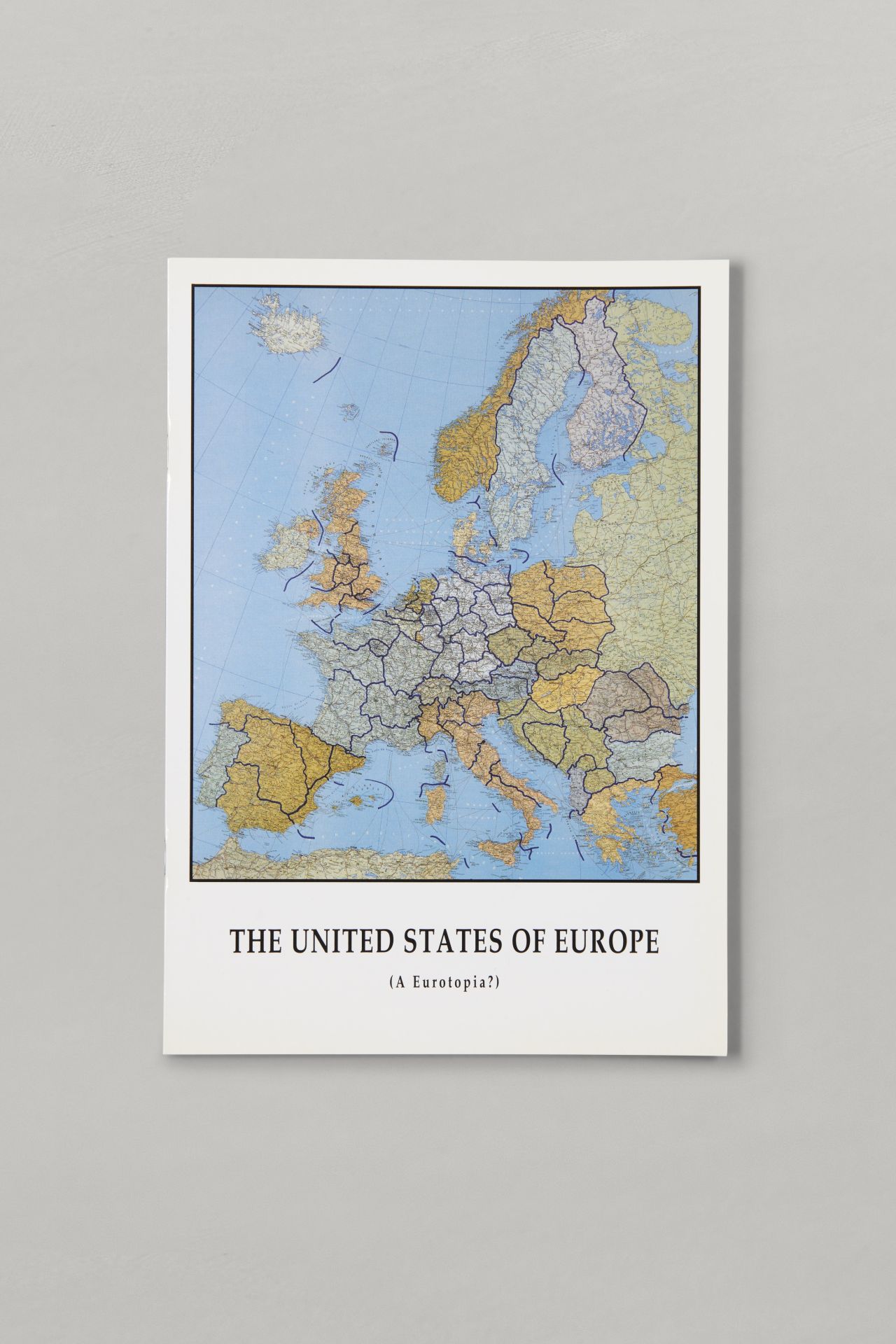INFO
The United States of Europe (A Eurotopia?)
A.H. Heineken et al.
The Amsterdam Foundation for Historical Science
1992

A utopian idea?
With this treatise on the ‘United States of Europe,’ in 1992 Alfred (Freddy) Heineken advocated a new, decentralized Europe. The present structure, he asserted in the foreword, is not right for the future. Why not divide Europe into 75 states of 5 to 10 million inhabitants each, which together will form a federation?
Grounded in the American model, such a state structure would guarantee peace and stability because in this way no country can dominate the others. Heineken based himself on his own experiences in the United States, where he worked as an assistant to Heineken sales promoter Leo van Munching for some time after the Second World War.
Parkinson’s law
Freddy also drew inspiration for this plan from Prof. Cyril Northcote Parkinson (1909 - 1993), known from his book Parkinson’s Law. In it, he states that the size of the British empire decreased, while the size of the civil service increased in keeping with the notion that work expands to fill the time available for its completion. Thus, by expanding bureaucracy, a society will eventually grind to a halt.
Eurotopia
Embroidering on this ‘law,’ Parkinson developed ideas about a European Federation, which he shared with Freddy Heineken when they met in the early 1990s. In the publication The United States of Europe (A Eurotopia?), Heineken’s article ‘Second thoughts on Europe’ examines whether the professor’s thoughts are really all that ‘utopian.’ He himself saw excellent opportunities for the smaller-scale division of the continent, provided it was combined with a federative structure. This concept is depicted in an enclosed map of Europe whose borders have been determined along political and historical grounds with the help of the historians Prof. Dr. H.L Wesseling and H.W. van den Doel of Leiden University. It includes a list of the 75 states with capitals and population.
Ungovernable
Heineken’s publication was a direct response to the treaties of Maastricht and of Porto concluded in 1992: in Maastricht, the European Union (EU) of twelve countries, including the Netherlands, came into being, and in Porto, the European Economic Area (EEA) was established granting 30 member states access to the EU’s internal market and committing them to the free movement of people, goods, services, and capital. While Heineken welcomed these developments, he feared they would lead to an ungovernable monstrosity.
Lukewarm
His publication met with a lukewarm response from politicians, who deemed the plan as not being ‘very realistic.’ Nevertheless, a second printing of the booklet soon followed. The authors are mainly pragmatic: for commercial reasons, Heineken and the historians introduced a change to their division of Europe. To prevent the threat of a boycott of Heineken beer in Greece, Macedonia’s size is reduced much more than in the first edition.